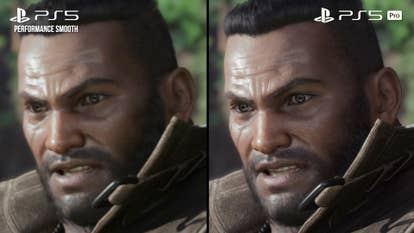Corporal.Hicks
Member
The ryzen 3600 is certainly not enough to match PS5 CPU performance. It has less CPUs cores and it also have to work a lot harder to make up for the lack of decompression chip. If the game is built around the PS5 decompression chip (like the TLOU1 remake) the 3600 cannot run such port well.Any proof to console outperforming 3600? In theory everything you said is true but in practice we rarely see any of it in action.


This is completely CPU limited scenario ^
I think I prefer softer fur of PSSR, but yeah AF difference is apparent as well.
If fucks me up, I have x16 forced in control panel of the driver since at least 2009 but here we are in 2024 on a console that has almost 600GB/s of memory bandwidth AF is still a problem...
Dips below 60fps, almost 100% full CPU usage due to decompression resulting in stuttering.
I cannot understand why Digital Foundry keeps using 3600 in their PS5 comparisons. They mislead people because that CPU is not up to the job.
Last edited:











